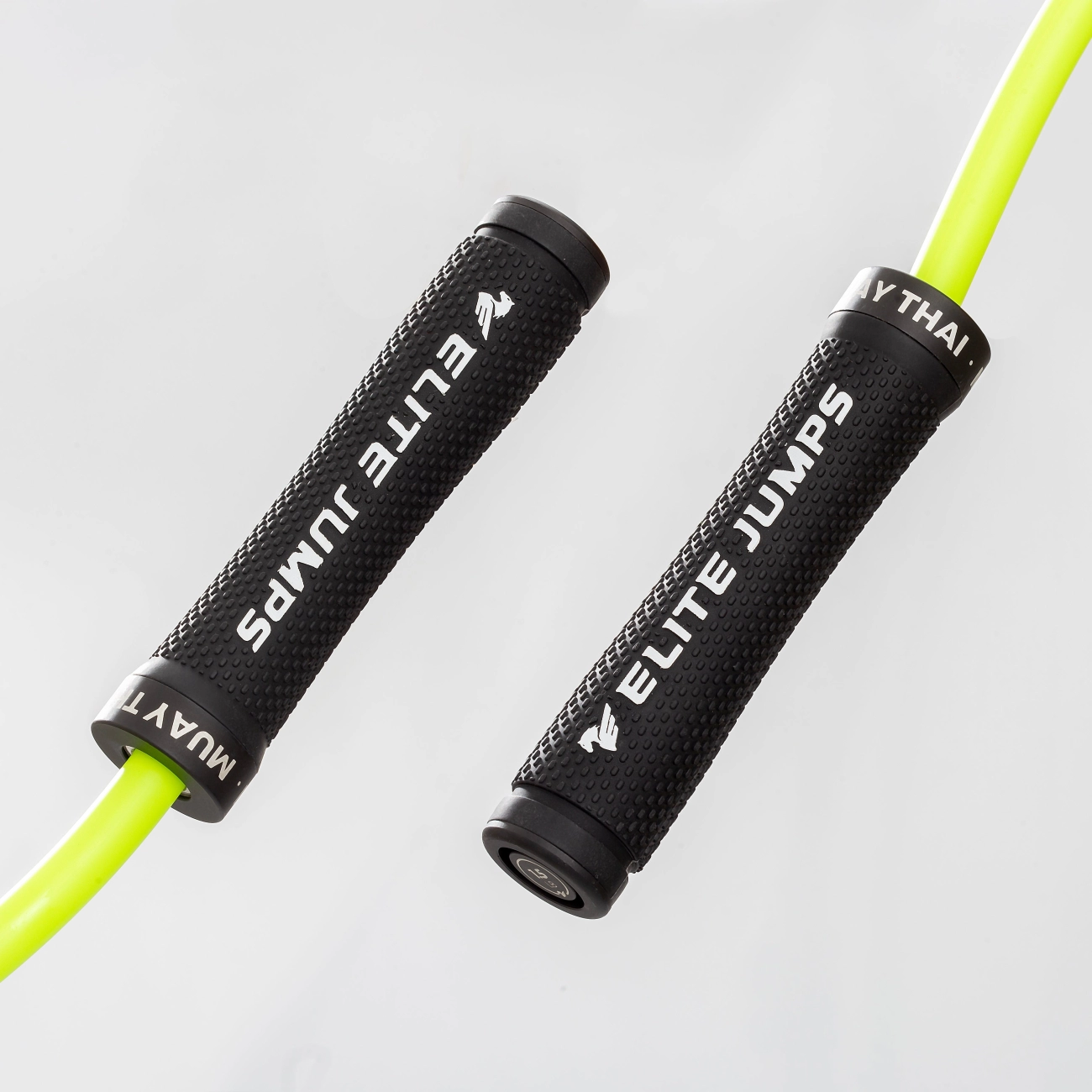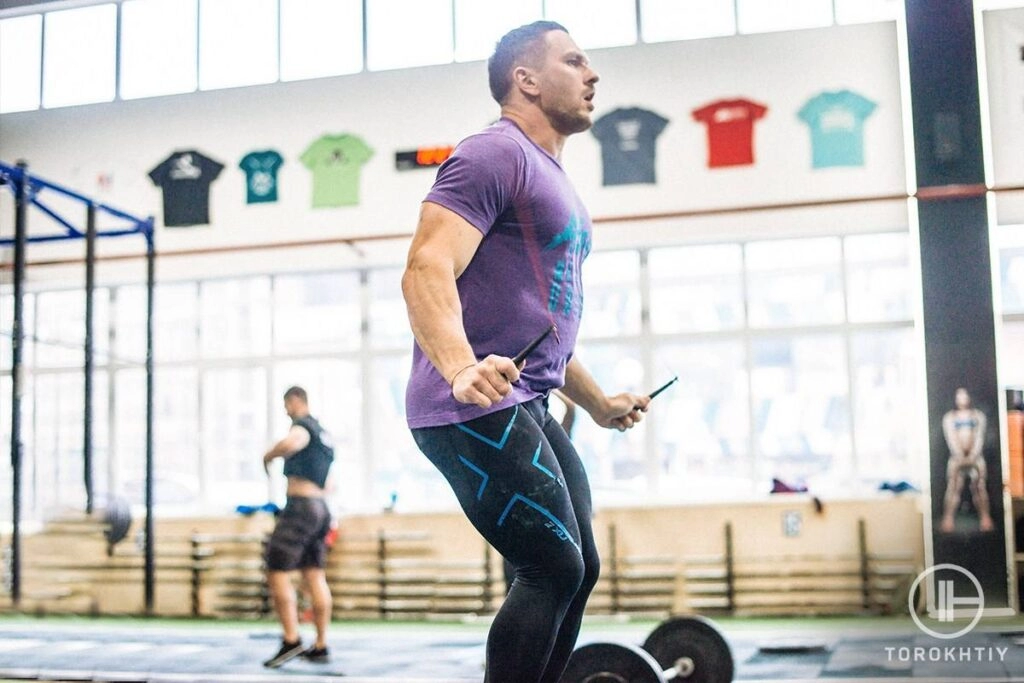Why Learn Different Ways to Jump Rope
Jump roping is more than just a simple cardio exercise. Learning different jump rope techniques opens up a world of benefits that go beyond burning calories. It enhances your overall fitness by improving your cardio endurance, coordination, and agility, making your workouts more effective and enjoyable.
Benefits of Varied Jump Rope Workouts
-
Improved Cardiovascular Health
Switching up your jump rope moves keeps your heart rate fluctuating, which boosts cardiovascular fitness and burns more calories. This helps build stamina for longer, more intense sessions.
-
Enhanced Coordination and Timing
Different jump rope exercises challenge your brain and body to work together smoothly. Moves like criss-cross or alternating foot steps require focus, improving your footwork and rhythm.
-
Increased Endurance and Strength
Varying your jump rope routine targets multiple muscle groups in your legs, core, and even arms. This develops muscular endurance and strength through controlled, repetitive movement.
-
Boosted Agility and Quickness
Techniques that involve quick feet or sudden changes in direction train your body to react faster. This is great not just for fitness but also for sports performance and injury prevention.
How Different Techniques Target Specific Muscle Groups and Fitness Goals
When you explore different jump rope exercises, you’re not just mixing things up—you’re targeting muscles and fitness goals in different ways.
-
Basic bounce and alternate foot step jumps work your calves and improve endurance, perfect for beginners or recovery days.
-
High knees and double unders engage core muscles and increase explosive leg power, ideal for athletes or high-intensity cardio.
-
Backward jumping and boxer step footwork enhance balance, coordination, and rhythm, aiding balance training and foot speed.
By mastering various jump rope styles, you can create workouts that align with your fitness goals—whether it’s weight loss, improved agility, or enhanced muscle tone. This approach ensures your training stays fresh, challenging, and rewarding.
Learning how to jump rope properly with different techniques makes every session more productive and fun while reducing the risk of injury. It’s a smart way to maximize the benefits of jump rope workouts for beginners and advanced fitness levels alike.
Basic Jump Rope Techniques for Beginners
Starting with basic jump rope techniques is essential to build a solid foundation for your jump rope workouts. These moves are simple, effective, and help improve coordination, rhythm, and endurance without overwhelming you.
Basic Bounce Jump
The Basic Bounce is the go-to foundation jump for beginners. It involves jumping with both feet together just high enough for the rope to pass under you. This technique:
- Builds timing and rhythm
- Enhances cardiovascular endurance
- Is easy to learn and perfect for warming up
Focus on keeping your jumps low and landing softly on the balls of your feet. Maintaining a steady pace will help you build confidence and stamina.
Alternate Foot Step Jump
The Alternate Foot Step Jump mimics a light jog in place, where you lift one foot at a time while jumping rope. This technique:
- Boosts coordination between your feet and hands
- Increases agility and balance
- Adds variety to your jump rope exercise routine
Try to keep your movements smooth and fluid, shifting your weight evenly from one foot to the other. This move is great for breaking up the monotony of basic bouncing and helps prepare you for more advanced footwork drills.
Both these beginner techniques form the basis of more complex jump rope workouts and are key to mastering proper jump rope form. Spend time practicing these before moving on to intermediate or advanced jump rope techniques.
Intermediate Jump Rope Techniques for Better Cardio and Coordination

Once you’ve got the basics down, stepping up to intermediate jump rope techniques can seriously boost your fitness routine. These moves take your cardio, coordination, and leg strength to the next level while keeping workouts interesting.
High Knees for Intense Cardio and Leg Strength
High knees are a staple in advanced jump rope workouts because they raise your heart rate quickly and engage your lower body muscles more deeply than basic bounces. When you jump with high knees, you lift each knee toward your chest, activating your core and hip flexors, while improving cardiovascular endurance and leg power. This technique also enhances your rhythm and timing since your jumps become quicker and more controlled.
- Boosts heart rate rapidly for a serious cardio challenge
- Strengthens quads, calves, and core muscles
- Improves jump rope speed and timing
Criss-Cross for Coordination and Timing
The criss-cross jump is a fun but challenging move that works wonders for hand-eye coordination and timing. In this technique, you cross your arms in front of you while jumping, then quickly uncross them on the next skip. This requires precise rope control and rhythm, making it one of the best exercises for improving overall agility and coordination.
- Challenges your upper body agility and rope manipulation skills
- Sharpens timing and smoothness in your jump rope routine
- Adds variety to your jump rope workouts to prevent plateaus
Side Swing as Active Rest or Warm-Up
Not every jump has to be fast or intense. The side swing is a slower, lateral rope movement where the rope swings to one side of your body instead of under your feet. This move is excellent for active recovery, warming up your wrists and shoulders, and maintaining movement without overexertion.
- Acts as a gentle active rest during high-intensity jumping sessions
- Helps build wrist flexibility and control for more advanced moves
- Keeps the heart rate steady without fatigue buildup
Incorporating these intermediate jump rope exercises into your routine will improve your overall fitness by boosting endurance, speed, and coordination. They bridge the gap between beginner skills and advanced jump rope moves that require more power and precision. For more tips on skill progression and choosing the right rope, check out our adjustable PVC jump rope options designed for every technique.
Advanced Jump Rope Techniques for Fitness and Coordination

Once you’ve mastered the basics and intermediate jump rope exercises, stepping up to advanced jump rope techniques will truly challenge your coordination, speed, and power. These moves are perfect for boosting your cardiovascular jump rope routines and taking your fitness goals further.
Double Unders for Speed and Explosive Power
The Double Under is a staple in advanced jump rope workouts, where the rope passes under your feet twice with one jump. This technique demands:
- Fast wrist action and timing
- Explosive leg power to jump higher and quicker
- Increased heart rate, making it an intense cardiovascular workout
Mastering double unders can significantly improve your speed and agility. Many athletes use this technique to build explosive power and endurance.
Backward Jumping for Coordination and Balance
Backward jumping involves swinging the rope in the opposite direction while maintaining your jump rhythm. It’s great for:
- Enhancing balance and proprioception
- Sharpening your coordination because it reverses your usual movement pattern
- Providing a fresh challenge that targets different muscle groups, especially in your calves and shins
Adding backward jumps to your routine helps prevent workout plateaus by engaging your brain and body differently.
Boxer Step for Footwork and Rhythm
The Boxer Step mimics the light, rhythmic footwork used by boxers in the ring. It involves shifting your weight from one foot to the other with small hops, keeping you light on your toes. Benefits include:
- Improving footwork and rhythm, which translates into better overall agility
- Reducing impact by staying on the balls of your feet, which lowers injury risk
- Helping maintain endurance during longer jump rope sessions by pacing your movement
This technique is a solid drill for anyone looking to refine their jump rope footwork and increase workout longevity.
Incorporating these advanced jump rope techniques into your training not only builds physical skills but also sharpens mental focus and timing. For best results, use the right jump rope designed for speed and durability, such as high-quality PVC ropes from PVCJumpRope.com, which are tailored for various jump rope styles and fitness levels.
How to Choose the Right Jump Rope for Different Techniques
Picking the right jump rope is key to mastering different jump rope techniques and hitting your fitness goals efficiently. Not all ropes work the same way—material, length, and weight all play a big role in your performance and comfort.
Importance of Rope Material
The material impacts speed, durability, and feel. For most jump rope workouts, especially cardiovascular jump rope routines or advanced jump rope moves, you want a rope that’s light, fast, and durable. PVC ropes, like the ones from PVCJumpRope.com, are a solid choice because:
- They’re lightweight, allowing quicker rotations for moves like double unders.
- The smooth surface reduces friction, making the rope easier to swing continuously.
- PVC is durable enough for both indoor and outdoor use without wearing down fast.
- They offer enough stiffness to improve timing and control, making coordination and footwork drills easier.
Rope Length and Weight Matter
Using the right rope length is crucial to avoid tripping or wasting energy. Here’s a quick guide:
- Stand on the middle of the rope: The handles should reach just below your armpits.
- For shorter ropes, expect faster swings, best for advanced techniques like criss-cross and high knees.
- Heavier ropes can help build endurance but might slow you down. Lightweight PVC ropes deliver a great balance for both beginners and advanced jumpers.
Why PVC Ropes from PVCJumpRope.com Are Ideal
Jump rope users in the U.S. market appreciate these PVC ropes for their versatility across all fitness levels. Whether you’re warming up with side swing moves or pushing through intense cardio workouts, these ropes adapt well.
- They fit various jump rope exercises and techniques without needing different sets.
- Designed for OEM/ODM options, they can be customized for grip and length based on your preference.
- The quality ensures longevity without compromising performance.
Choosing a quality PVC jump rope tailored to your workout style helps you train smarter, prevent frustration, and progress faster in mastering jump rope footwork drills and overall coordination.
Tips for Mastering Different Jump Rope Techniques
Mastering various jump rope techniques requires focus on proper posture, warm-up and cool-down routines, and avoiding common mistakes. These elements ensure you get the most from your jump rope workouts while minimizing injury risk.
Proper Posture and Form for Jump Rope Techniques
- Keep your head up and eyes forward. Avoid looking down at your feet to maintain balance and proper body alignment.
- Relax your shoulders and arms. Tension here wastes energy and reduces rope control.
- Use your wrists to turn the rope, not your whole arms. This improves speed, rhythm, and reduces fatigue.
- Land softly on the balls of your feet. This helps with agility and reduces joint impact.
- Maintain a slight bend in the knees. It enhances shock absorption and keeps you light on your feet.
Remember, maintaining good form across all jump rope exercises builds better coordination and endurance without sacrificing technique.
Warm-Up and Cool-Down Routines for Jump Rope Workouts
Before jumping in, always spend 5–10 minutes warming up to prepare your muscles and joints:
- Dynamic stretches like leg swings and arm circles.
- Light jogging or brisk walking to get blood flowing.
- Basic jump rope drills at a slow pace to ease into movement.
After your workout, cool down with:
- Static stretches focusing on calves, hamstrings, and shoulders.
- Deep breathing exercises to promote recovery.
These routines prevent injuries and improve your jump rope training results over time.
Common Mistakes and How to Avoid Them
- Jumping too high. Keep jumps low to conserve energy and keep a steady rhythm.
- Landing flat-footed. Always land on the balls of your feet to protect your knees and ankles.
- Using improper rope length. A rope too long or short affects timing — check the correct length for your height. You can find adjustable options like the rope from PVCJumpRope.com.
- Holding handles too tightly. Keep a firm but relaxed grip to maintain smooth rotation.
- Skipping warm-up or ignoring fatigue signals. Listen to your body—rest and recovery are essential.
By focusing on these tips and making slight adjustments, you’ll improve your jump rope footwork drills, coordination, and overall fitness within any workout routine. For more guidance on form and techniques, check out this detailed resource on proper jump rope form.
How to Incorporate Different Jump Rope Styles into Your Workout for Best Results

Jump rope workouts offer a lot of variety, which means you can tailor your sessions to match your fitness level and goals. Whether you’re just starting out or looking to challenge yourself with advanced jump rope moves, mixing different techniques keeps things fresh and effective.
Sample Beginner to Advanced Workout Plans Using Varied Jump Rope Techniques
Beginner Plan
- Warm-up: 5 minutes of Side Swing for light movement and getting your heart rate up
- Main set:
- 1 minute Basic Bounce (steady pace)
- 30 seconds Alternate Foot Step Jump (simulating jogging in place)
- Repeat for 3 rounds
- Cool down: Light jump rope swings and stretching
Intermediate Plan
- Warm-up: 5 minutes of Side Swing and Alternate Foot Step Jump
- Main set:
- 1 minute High Knees (raise knees to waist level for cardio and leg strength)
- 30 seconds Criss-Cross (focus on coordination)
- 30 seconds Basic Bounce
- Repeat for 4 rounds
- Cool down: Slow jumps followed by stretching
Advanced Plan
- Warm-up: 5 minutes of Side Swing and Backward Jumping
- Main set:
- 30 seconds Double Unders (fast jumps with 2 rope passes per jump)
- 45 seconds Boxer Step (footwork to develop rhythm)
- 30 seconds High Knees
- 30 seconds Criss-Cross
- Repeat for 5 rounds with 30 seconds rest between rounds
- Cool down: Slow jumps and deep stretching
Combining Jump Rope with Other Exercises for Optimal Results
Jump rope works best when combined with other types of training for a full-body workout and improved endurance. Here are some ideas to get you started:
-
Circuit Training: Alternate 1 minute of jump rope (using varied techniques like High Knees or Double Unders) with 1 minute of bodyweight exercises like push-ups, squats, or planks. Repeat for 20-30 minutes.
-
HIIT Workouts: Use jump rope for cardio bursts, such as 30 seconds of intense jumping followed by 15 seconds of rest or low-intensity movement (like Side Swing). Incorporate other high-intensity moves between jumps.
-
Strength Training Warm-up: Include 5-10 minutes of basic jump rope techniques before lifting weights to boost heart rate and improve coordination.
-
Active Recovery: Use slower jump rope moves, such as Side Swing or Backward Jumping, on rest days to keep muscles engaged without overloading.
Key Tips to Maximize Your Workout
-
Mix Techniques: Don’t stick to just one jump rope exercise. Rotating between different moves helps target various muscle groups and keeps your workout balanced.
-
Set Clear Goals: Build your routine around what you want—endurance, coordination, or explosive power—and pick styles that match those goals.
-
Track Progress: Time your jumps, count rounds, or record the number of jumps to monitor improvement.
Using the right jump rope and proper technique is essential to make the most out of these workouts. Check out quality options like PVC ropes from PVCJumpRope.com, designed for durability and speed across all jump rope exercises.
Incorporating these varied jump rope styles into your fitness routine will boost cardiovascular health, coordination, endurance, and agility—making your workouts more engaging and effective overall.
Safety Considerations When Jumping Rope
Jump rope workouts are effective but can be tough on your body if you’re not careful. To keep your routine safe and injury-free, prioritize the right gear, surface, and listen to your body. This helps you get the most from your jump rope training without setbacks.
Gear and Surface Recommendations for Jump Rope Safety
-
Choose the Right Jump Rope
Using a quality jump rope designed for your style makes a huge difference. For example, PVC ropes from PVCJumpRope.com offer the perfect balance of durability and lightness, suitable for everything from basic jump rope workouts for beginners to advanced jump rope moves like double unders.
-
Wear Supportive Shoes
Always use well-cushioned athletic shoes that provide good arch support and shock absorption to reduce impact on your joints.
-
Jump on Proper Surfaces
Avoid hard flooring like concrete, which can stress your knees and ankles. Instead, jump on rubber mats, wooden floors, or gym flooring that offer some give and reduce impact.
Listening to Your Body and Injury Prevention
-
Warm Up and Cool Down
Before starting any jump rope exercise, do a brief warm-up to get your muscles ready. After your session, cool down to prevent stiffness and soreness.
-
Start Slow and Progress Gradually
Don’t rush into advanced jump rope techniques or high-intensity cardio jump rope routines. Build endurance and coordination steadily to avoid overuse injuries.
-
Watch for Pain and Fatigue
Mild soreness is normal, but sharp pain or joint discomfort means it’s time to stop. Pay attention to how your body feels and rest when needed to prevent strains and sprains.
-
Maintain Proper Form
Keeping good jump rope posture reduces the risk of neck, back, and ankle injuries. Focus on soft landings and controlled movements rather than just speed.
By keeping these safety tips in mind and using the right jump rope plus surface, you can confidently enjoy all the benefits of varied jump rope training without compromising your health.



